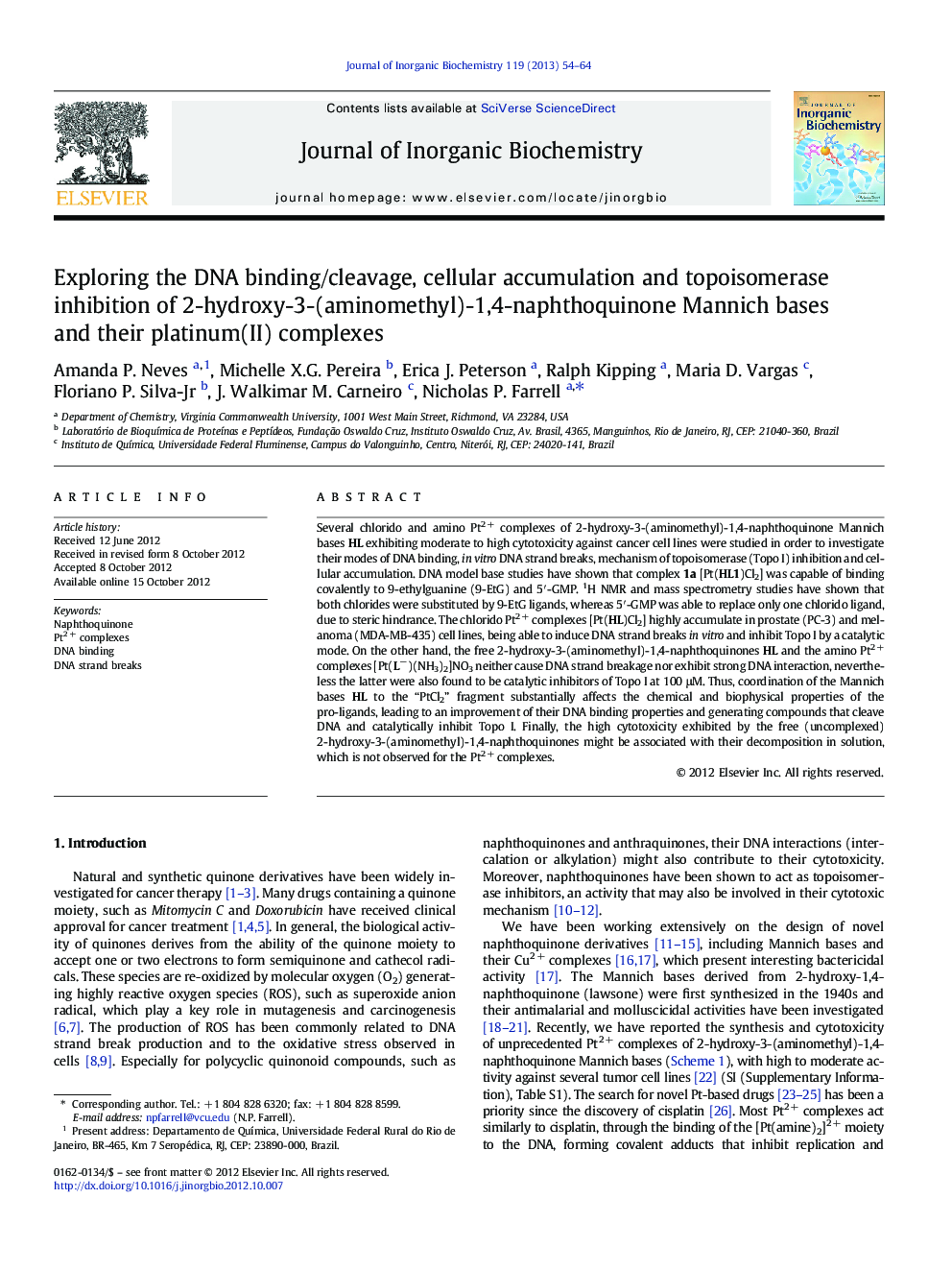| Article ID | Journal | Published Year | Pages | File Type |
|---|---|---|---|---|
| 1317689 | Journal of Inorganic Biochemistry | 2013 | 11 Pages |
Several chlorido and amino Pt2 + complexes of 2-hydroxy-3-(aminomethyl)-1,4-naphthoquinone Mannich bases HL exhibiting moderate to high cytotoxicity against cancer cell lines were studied in order to investigate their modes of DNA binding, in vitro DNA strand breaks, mechanism of topoisomerase (Topo I) inhibition and cellular accumulation. DNA model base studies have shown that complex 1a [Pt(HL1)Cl2] was capable of binding covalently to 9-ethylguanine (9-EtG) and 5′-GMP. 1H NMR and mass spectrometry studies have shown that both chlorides were substituted by 9-EtG ligands, whereas 5′-GMP was able to replace only one chlorido ligand, due to steric hindrance. The chlorido Pt2 + complexes [Pt(HL)Cl2] highly accumulate in prostate (PC-3) and melanoma (MDA-MB-435) cell lines, being able to induce DNA strand breaks in vitro and inhibit Topo I by a catalytic mode. On the other hand, the free 2-hydroxy-3-(aminomethyl)-1,4-naphthoquinones HL and the amino Pt2 + complexes [Pt(L−)(NH3)2]NO3 neither cause DNA strand breakage nor exhibit strong DNA interaction, nevertheless the latter were also found to be catalytic inhibitors of Topo I at 100 μM. Thus, coordination of the Mannich bases HL to the “PtCl2” fragment substantially affects the chemical and biophysical properties of the pro-ligands, leading to an improvement of their DNA binding properties and generating compounds that cleave DNA and catalytically inhibit Topo I. Finally, the high cytotoxicity exhibited by the free (uncomplexed) 2-hydroxy-3-(aminomethyl)-1,4-naphthoquinones might be associated with their decomposition in solution, which is not observed for the Pt2 + complexes.
Graphical abstractThe mode of DNA binding/cleavage, cellular accumulation and Topoisomerase I inhibition of 2-hydroxy-3-(aminomethyl)-1,4-naphthoquinone and their Pt2 + complexes have been studied.Figure optionsDownload full-size imageDownload as PowerPoint slideHighlights► Naphthoquinone-Pt2 + hybrid complexes exhibiting cytotoxic activity were studied. ► Compounds of the type [Pt(HL)Cl2] may interact with DNA through covalent bonding. ► [Pt(HL)Cl2] complexes inhibit Topo I activity and induce DNA strand breaks. ► Pro-ligands and [PtL−(NH3)2]NO3 complexes do not induce DNA strand breaks. ► The high cytotoxicity of the pro-ligands might be associated with decomposition.
